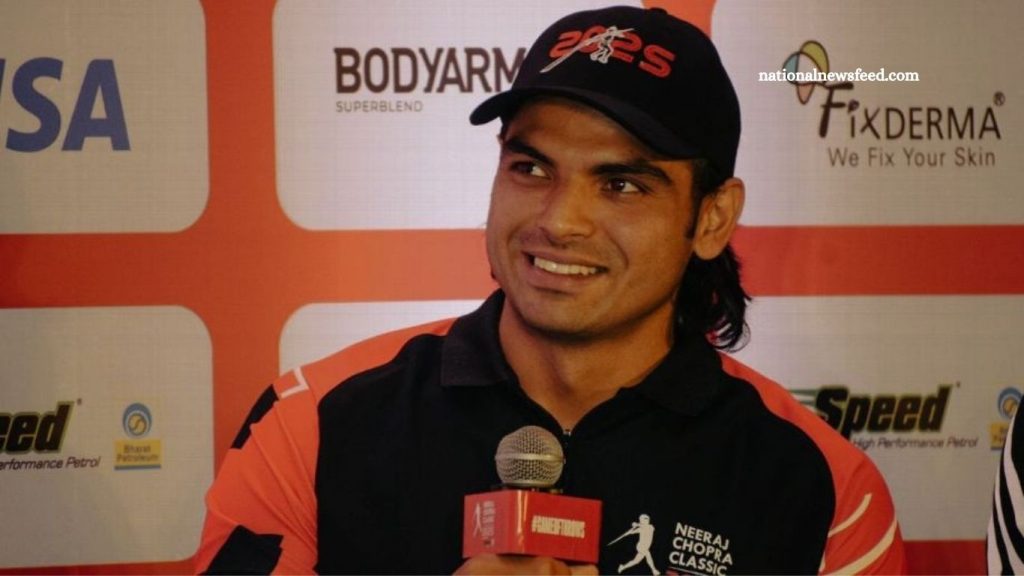India witnessed a new side of Olympic gold medallist Neeraj Chopra—one not just focused on breaking records but also on building a lasting legacy. At the inaugural Neeraj Chopra Classic, the javelin superstar stepped into an unfamiliar role: event organizer, mentor, and ambassador for the sport.
This wasn’t the calm, composed Neeraj we’re used to seeing before competitions. At a pre-event press conference in Bengaluru, he appeared unusually restless, seated beside javelin greats like Thomas Röhler, Julius Yego, and emerging Indian thrower Sachin Yadav. The reason? Neeraj wasn’t just competing this time—he was hosting.
A Gold Medallist’s New Mission
For the first time in his career, Chopra’s focus wasn’t solely on throwing the javelin. He was juggling meetings, inspecting stadium conditions, greeting international athletes, and ensuring the Neeraj Chopra Classic met world-class standards.
“I’ve always just focused on competing,” he shared with a smile. “But now I have to take care of everything—from the length of the grass to the event’s overall atmosphere. And honestly, I’m enjoying it.”
The event, held at Bengaluru’s Kanteerava Stadium, marks a monumental shift in India’s athletics landscape. It’s the first elite-level international javelin competition held in the country, and Chopra is the driving force behind it.
Read More: Neeraj Chopra Classic: Javelin Legends Rohler, Yego Set to Compete in Bengaluru
A Dream Realized, A Legacy in Motion
For Neeraj, organizing such an event wasn’t part of his original vision. “I just wanted to represent India and win medals,” he said. But now, with both Olympic gold and World Championship silver under his belt, he feels a deeper sense of responsibility.
“This gives me peace,” he admitted. “Winning medals is different, but this feels like giving something back to India.”
The satisfaction in his voice revealed a broader ambition—one that goes beyond personal glory. By bringing world-class events to India, Chopra hopes to inspire a new generation of athletes while strengthening the country’s international sporting presence.
Overcoming Hurdles with Grit
The path to hosting this historic event wasn’t smooth. Initially planned for Panchkula, the venue had to be shifted due to inadequate floodlighting. Soon after, geopolitical tensions between India and Pakistan caused a two-month delay.
Many would have abandoned the idea. Neeraj didn’t. Instead, he held high-level talks with both Haryana and Karnataka governments, secured JSW’s support, and convinced international athletes to accommodate the change in their packed schedules.
His determination paid off, as top athletes like Röhler and Yego eagerly joined. “When I heard about the event, I said yes immediately,” Yego stated. “Neeraj is a good friend, and I couldn’t miss this.”
International Support for India’s Sporting Rise
Olympic champion Thomas Röhler emphasized the global importance of the event. “This is the next logical step—bringing the sport to people live, not just on screens,” he said.
He described India’s journey in three phases: an Indian winning globally (Neeraj), hosting world-class events, and then building coaching and infrastructure ecosystems. According to Röhler, the Neeraj Chopra Classic is a crucial step in that evolution.
Building a Platform for Young Indian Talent
Neeraj’s motivations go far beyond the international spotlight. His vision includes creating more opportunities for India’s upcoming athletes. “In Germany, world-class competitions happen every week. I want the same for India,” he explained.
He hopes India can host four to six major competitions annually, providing domestic athletes with global exposure without leaving home. As he placed a supportive hand on young Sachin Yadav’s knee, the symbolism was clear—Neeraj wants others to rise, just like he did.
More Than a Medal: Building the Future
On competition day, Chopra will line up at the runway like always—but this time, with a deeper mission. “Yes, we all want to throw well. But the real goal is to make this event a success, so we can grow it year by year.”
He’s not just chasing another 90-meter throw. He’s chasing transformation—a permanent place for Indian athletics on the global map. As his javelin slices through the sky, it won’t just be about distance. It will be about direction: the future of Indian sport.
Frequently Asked Questions
What is the Neeraj Chopra Classic?
The Neeraj Chopra Classic is India’s first high-level international javelin competition, organized by Olympic gold medallist Neeraj Chopra to promote athletics in India.
Why did Neeraj Chopra organize this event?
Neeraj wanted to give back to Indian sports by creating opportunities for domestic athletes and introducing international-standard competitions in India.
Who were the key international athletes at the event?
Notable names included Thomas Röhler (Olympic champion) and Julius Yego (former World champion), who joined to support Neeraj’s vision.
Where was the event held?
The inaugural edition was held at the Kanteerava Stadium in Bengaluru after a venue change from Panchkula due to infrastructure issues.
What challenges did Neeraj face in organizing the event?
The event faced venue lighting problems, a two-month postponement due to geopolitical tensions, and a packed global sports calendar.
How does this event help young Indian athletes?
By competing alongside world champions, young Indian javelin throwers gain valuable experience, exposure, and inspiration.
Is this event expected to continue annually?
Yes, Neeraj hopes the success of this edition will pave the way for an annual series of elite competitions in India.
How does this contribute to India’s global athletics ambitions?
It sets a foundation for hosting regular world-class events, improves infrastructure, and boosts India’s profile in global athletics.
Conclusion
The Neeraj Chopra Classic isn’t just a competition—it’s a statement. A declaration that India is ready to be a serious player in the global athletics arena. Neeraj Chopra has already conquered the field. Now, he’s building it for others.
As the stadium roared and the javelins flew, it became clear: Chopra’s true legacy won’t just be in how far he threw, but in how far he helped the sport grow.

